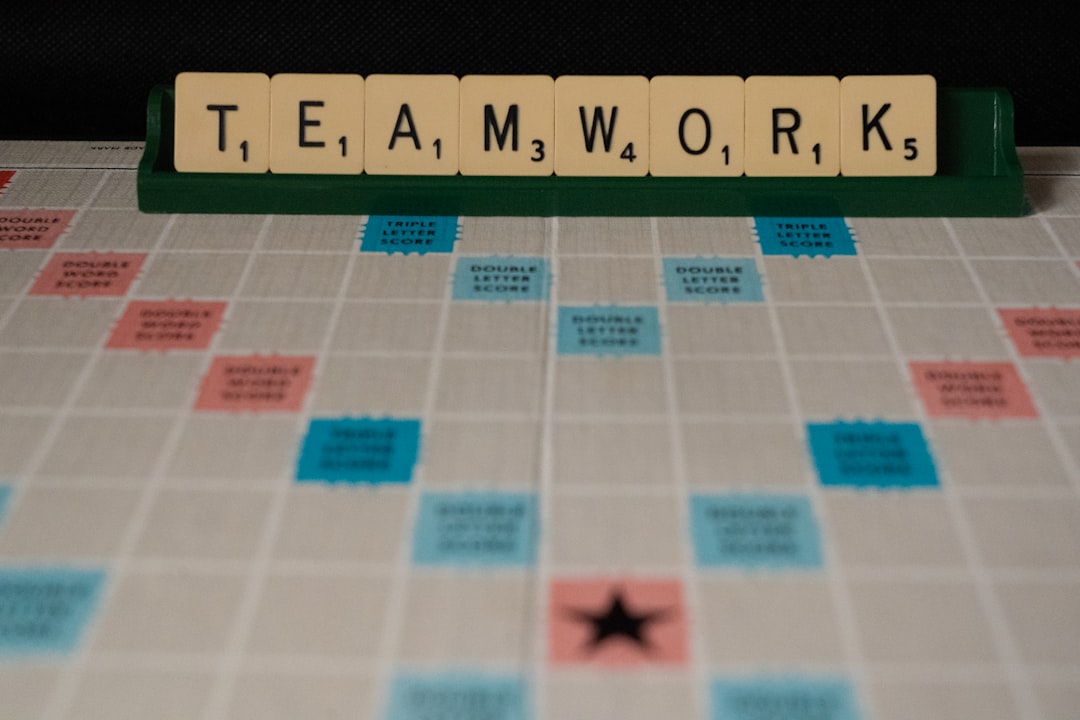Optimizing Your Day When Working Across Continents

Introduction
Remote work has dissolved the walls of the traditional office and opened a world where teams can be spread across continents. The freedom to collaborate with colleagues in New York, Berlin, Bangalore or Sydney is a powerful advantage, but it also creates a hidden set of challenges. When the sun rises in one part of the globe, it may be setting in another, and the overlap of working hours can be narrow, unpredictable or even non‑existent.
Optimizing your day under these conditions is not a matter of luck; it requires a deliberate approach that blends time‑zone awareness, personal energy rhythms, technology, and clear communication. This article walks you through a step‑by‑step framework that lets you stay productive, maintain a healthy work‑life balance and keep the team moving forward, no matter where the participants are located.
Understanding the Time‑Zone Landscape
Before you can design a schedule that works, you need a clear mental map of the time zones your team spans.
Visual Mapping
- Use a world map or an online time‑zone converter to plot each team member’s local time.
- Mark the typical start and end of the workday for each location (for example 9 am–5 pm).
- Shade the zones of overlap – the hours when two or more members are simultaneously at work.
Seeing the data in a visual format immediately reveals where the “sweet spots” lie and where you will need to rely on asynchronous communication.
The Concept of “Core Hours”
Many globally distributed teams adopt a set of core hours – a short window each day when most members are expected to be available for live discussions. Core hours are usually chosen to maximize overlap while keeping the window reasonable for all participants.
If your team includes members in San Francisco (UTC‑8), London (UTC+0) and Singapore (UTC+8), a common core window might be 12 pm–2 pm UTC. For San Francisco this falls early in the morning, for London it is lunchtime, and for Singapore it is evening.
Seasonal Shifts
Daylight‑saving time changes can shift the overlap by an hour in regions that observe it. Keep an eye on the calendar for these transitions and adjust your core hours accordingly.
Mapping Your Personal Overlap
Now that you understand the team‑wide picture, narrow the focus to your own schedule.
Identify Your High‑Energy Blocks
Most people have predictable periods of peak concentration – often in the morning, after a short break, or late in the afternoon. Track your productivity for a week using a simple log: note the start and end times of each work session and rate the quality of output on a scale of 1 to 5.
From this data you can identify the blocks where you consistently score 4 or higher. These are your high‑energy windows and should be protected for deep work that requires focus.
Align High‑Energy Blocks With Overlap
Cross‑reference your personal high‑energy windows with the team’s core hours. If there is a match, schedule live meetings, brainstorming sessions or any activity that benefits from real‑time interaction during that period.
If the overlap falls in a low‑energy window for you, consider the following options:
- Shift a personal routine (e.g., start the day earlier) to move your high‑energy period into the overlap.
- Use the overlap for lighter tasks such as status updates, quick sync‑ups or decision confirmations that do not demand deep focus.
- Delegate the real‑time responsibility to a teammate whose high‑energy period aligns better, and handle follow‑up asynchronously.
Buffer Zones
Create buffer zones on either side of the overlap. These are short periods (15–30 minutes) that give you time to transition into and out of meetings, review notes, or write quick summaries. Buffers reduce cognitive load and help maintain momentum throughout the day.
Setting Boundaries
When you work across continents, the temptation to be “always on” can be strong. Boundaries protect both productivity and wellbeing.
Define Your Working Hours
Even if you are flexible, set a clear start and end time for your day and share it with the team. Use a shared calendar with visible working‑hour blocks so colleagues know when you are reachable.
Use Status Indicators
Most collaboration platforms allow you to set a status (available, busy, do not disturb). Update your status to reflect when you are in deep work, in a meeting, or taking a break. This visual cue reduces interruptions.
Communicate Availability Rules
Establish a simple rule set such as:
- Emails received outside of working hours will be answered the next business day.
- Urgent matters should be flagged with a specific subject line or a priority tag.
- Non‑urgent messages can be left for the next scheduled check‑in.
Document these rules in a shared team handbook so everyone knows what to expect.
Leveraging Tools and Automation
Technology is the backbone of cross‑continent collaboration. Choosing the right tools and automating repetitive tasks frees mental bandwidth for higher‑order work.
Calendar Integration
- Consolidate all time‑zone information into a single calendar (Google Calendar, Outlook).
- Enable automatic time‑zone conversion when creating events.
- Set recurring meetings with explicit time‑zone labels to avoid confusion.
Asynchronous Collaboration Platforms
- Use project‑management tools (Asana, Trello, Monday.com) to track tasks, assign owners, and set due dates in UTC.
- Adopt a shared document system (Google Docs, Notion, Confluence) that stores the latest version of files and allows comments for feedback.
Automated Status Updates
Bots can post daily stand‑up summaries, remind teammates of upcoming deadlines, or generate status reports from task boards. Automation reduces the need for manual check‑ins and ensures information flows smoothly across time zones.
Communication Channels
- Reserve video calls for discussions that truly need face‑to‑face interaction.
- Use threaded chat (Slack, Microsoft Teams) for quick questions, decisions and informal conversation.
- Keep email for formal, longer‑form communication or external stakeholders.
Version Control and Code Review
For software teams, platforms like GitHub or GitLab enable pull‑request reviews to happen asynchronously. Reviewers can leave comments, approve changes, or request revisions without needing both parties online at the same time.
Personal Energy Management
Even with perfect tools, your brain remains the most valuable resource. Managing energy, not just time, is essential for sustained productivity.
Morning Ritual
Start the day with a consistent ritual that signals the brain to shift into work mode. This could include a short walk, meditation, reading industry news, or reviewing the day’s priorities.
Micro‑Breaks
Research shows that taking brief breaks every 60–90 minutes restores focus. Use the Pomodoro technique (25 minutes work, 5 minutes break) or a customized interval that matches your natural rhythm.
Nutrition and Hydration
Eat balanced meals at regular intervals. A protein‑rich breakfast stabilizes blood sugar, while a light lunch prevents the mid‑afternoon slump. Keep a water bottle nearby; dehydration can mimic fatigue.
Physical Activity
Incorporate movement into the day – a quick stretch, a set of push‑ups, or a short walk outside. Physical activity increases circulation and improves cognitive function.
Sleep Hygiene
Cross‑continent work can blur the line between day and night. Protect sleep by:
- Maintaining a consistent bedtime, even on days when you have early meetings.
- Reducing screen exposure at least 30 minutes before sleep.
- Using blackout curtains or a sleep mask to create a dark environment.
Adequate sleep sharpens decision‑making, reduces error rates and supports emotional resilience.
Communication Strategies
Clear, concise communication is the glue that holds distributed teams together.
Structured Meeting Agendas
Send an agenda at least 24 hours before a meeting. Include:
- Objective of the meeting.
- Topics to be covered, each with a designated owner.
- Expected outcomes (decision, action items, information sharing).
A structured agenda keeps meetings focused, respects participants’ time and produces tangible results.
Meeting Recordings and Summaries
When meetings occur outside a participant’s working hours, record the session (with consent) and share the link promptly. Follow up with a written summary highlighting key decisions, assigned tasks and next steps.
Clear Action Items
Every discussion should end with explicit action items:
- Who is responsible.
- What the deliverable is.
- When it is due (include time‑zone).
Use a task‑tracking tool to automatically assign these items, reducing the risk of forgotten responsibilities.
Language Simplicity
When team members speak different native languages, avoid idioms, slang and culturally specific references. Plain language reduces misunderstandings and speeds up comprehension.
Feedback Loops
Encourage regular feedback on communication effectiveness. A short quarterly survey can surface issues such as “meeting times are too early for me” or “email responses are delayed.” Act on the findings to refine processes.
Designing Your Daily Rhythm
With the foundation set, craft a day‑to‑day schedule that aligns high‑energy work, collaboration windows and personal wellbeing. Below is a sample template that you can adapt to your own context.
Pre‑Work Warm‑Up (30 minutes)
- Review calendar for any early meetings or deadlines.
- Scan inbox for urgent messages flagged with the priority tag.
- Set status to “Do Not Disturb” for the next focused block.
Deep‑Work Block 1 (2–3 hours)
- Tackle the most cognitively demanding tasks (writing, coding, analysis).
- Eliminate distractions – close unnecessary tabs, mute notifications.
Transition Buffer (15 minutes)
- Review progress, jot down notes for the next block.
- Answer any quick, non‑urgent messages that arrived during deep work.
Overlap Collaboration Window (1–2 hours)
- Attend scheduled video calls, live brainstorming or decision‑making sessions.
- Use this time for quick sync‑ups with teammates in other regions.
Lunch and Recharge (45 minutes)
- Step away from the screen, eat a balanced meal.
- Take a short walk or stretch to reset the mind.
Deep‑Work Block 2 (2 hours)
- Continue high‑impact tasks or start a new focused activity.
- Apply the same distraction‑free principles as the first block.
Asynchronous Follow‑Up (30 minutes)
- Review the shared project board for updates.
- Leave comments on documents, approve pull requests, or update task status.
End‑Of‑Day Wrap‑Up (15 minutes)
- Summarize completed work and outline priorities for tomorrow.
- Set status to “Away” and log out of collaboration platforms.
Personal Time
- Engage in hobbies, family activities or exercise.
- Disconnect from work‑related devices to allow mental recovery.
Feel free to shift the lengths of each block to match your personal energy curve and the specific overlap windows of your team.
Weekly Planning and Review
A daily rhythm works best when it is supported by a weekly cadence.
Monday Planning Session
- Review the week’s objectives, aligning them with broader project milestones.
- Identify any upcoming cross‑continent meetings and mark them on the calendar.
Mid‑Week Check‑In
- Conduct a brief status update (15 minutes) with the core team.
- Address blockers, re‑prioritize tasks if needed.
Friday Review
- Reflect on what was accomplished versus the plan.
- Capture lessons learned, especially around time‑zone coordination.
- Update the shared knowledge base with any new processes or decisions.
Consistent weekly rituals create a sense of momentum and keep the entire team aligned despite geographic separation.
Handling Unexpected Changes
Even the best‑planned schedule can be disrupted by holidays, sick days, internet outages or sudden shifts in project scope.
Build Redundancy
- Assign a secondary point of contact for critical tasks.
- Document processes in a central repository so others can step in quickly.
Flexible Core Hours
If a team member is unavailable during the usual core window, consider rotating the core hours for that week. Communicate the change early and update calendar invites accordingly.
Rapid Communication Channels
Maintain a lightweight, real‑time channel (such as a Slack #urgent‑issues) for emergency notifications. Limit its use to truly urgent matters to avoid alert fatigue.
Contingency Planning
For each major deliverable, outline a contingency plan that details:
- What tasks can be postponed without major impact.
- Which tasks can be accelerated if extra resources become available.
- How to re‑allocate responsibilities across time zones.
Having a clear backup plan reduces stress when disruptions occur.
Cultural Sensitivity and Etiquette
Working across continents also means navigating cultural nuances.
Respect Local Working Hours
Avoid scheduling meetings that fall outside normal business hours for a region unless absolutely necessary. When you must do so, rotate the inconvenience among team members.
Holiday Awareness
Maintain a shared calendar that includes public holidays for each country represented on the team. This prevents accidental scheduling during off days.
Communication Tone
Different cultures have varying expectations around formality, directness and hierarchy. When in doubt, adopt a neutral, respectful tone and ask for feedback if you are unsure.
Celebrate Diversity
Allocate time for informal virtual gatherings that allow team members to share aspects of their culture – a short “show‑and‑tell” or a themed lunch. These activities strengthen trust and improve collaboration.
Health and Wellbeing in a Distributed Environment
Your physical and mental health are foundational to sustained productivity.
Ergonomic Workspace
- Invest in a supportive chair, adjustable desk and monitor at eye level.
- Use a keyboard and mouse that reduce strain.
Screen Time Management
- Apply the 20‑20‑20 rule: every 20 minutes look at something 20 feet away for 20 seconds.
- Use blue‑light filters in the evening to protect sleep quality.
Mental Health Resources
- Encourage the use of employee assistance programs, counseling services or mindfulness apps.
- Normalize taking mental‑health days when needed, just as you would a sick day.
Social Connection
Combat isolation by scheduling regular informal check‑ins, virtual coffee breaks or team‑building games. Human connection fuels motivation and reduces burnout.
Continuous Improvement
Optimizing a day across continents is an evolving practice.
Data‑Driven Adjustments
- Track metrics such as meeting duration, response time to messages and the number of tasks completed per day.
- Review these metrics monthly to identify patterns and areas for improvement.
Feedback Loops
- Conduct quarterly retrospectives focused specifically on time‑zone coordination.
- Solicit anonymous feedback to surface hidden pain points.
Learning Resources
- Stay updated on best practices by reading industry blogs, attending webinars on remote work and participating in communities of distributed teams.
By treating your workflow as a living system, you ensure it remains adaptable to changing team composition, project demands and personal circumstances.
Closing Thoughts
Working across continents offers a unique blend of challenges and opportunities. By mapping time‑zone overlap, aligning personal energy peaks, establishing clear boundaries, leveraging the right tools, and fostering transparent communication, you can turn geographic dispersion into a strategic advantage.
The framework outlined in this article provides a practical roadmap to design a day that maximizes productivity while safeguarding health and work‑life harmony. Implement the steps gradually, monitor the impact, and iterate based on real‑world experience. With deliberate planning and a commitment to continuous improvement, you will not only survive the complexities of global collaboration but thrive within them.
Random Posts

Sustainable Eating on the Go Guide for Nomad Lifestyle
Discover how nomads can eat healthy, low-impact meals on the move, balancing nutrition, eco-friendly choices and local culture with simple tools, tips and a sustainable mindset
2 months ago

Smart Finance Tax and Legal Strategies for Nomads Plus Health and Travel Insurance Plans
Discover how digital nomads can protect earnings and stay compliant with smart tax residency, corporate structures, and the right health and travel insurance, so you can roam worry-free.
1 month ago

The Ultimate Guide to Remote Team Collaboration
Master remote teamwork with proven strategies, tools, and culture tips. This guide shows how to turn distance into advantage, boost productivity, and keep your distributed team happy and high performing.
1 month ago

Hidden Gems for Remote Workers Across Europe
Discover Europe's offbeat towns where fast internet, low costs and authentic charm make remote work a joy, from Czech fairy tale streets to Portuguese coastal retreats, each spot offers a thriving digital nomad community.
1 month ago

Top Global Hubs for Digital Nomads with Smart Flight Strategies
Discover the worlds top digital-nomad hubs and learn cheap, flexible flight hacks to get you there so you can work from vibrant cities without draining your budget.
2 months ago
Latest Posts

Essential Software Every Remote Professional Should Use
Master remote work with essential tools: instant messaging like Slack, high definition video calls such as Zoom, and asynchronous voice apps. Streamline communication, stay connected and boost productivity.
1 day ago

Mastering Remote Work Productivity for Digital Nomads and Freelancers
Learn proven habits, tools, and tactics that help digital nomads and freelancers stay focused, deliver quality work, and maintain a sustainable lifestyle while traveling the world.
1 day ago

Tech‑Friendly European Towns Perfect for Remote Living
Discover Europe’s best small towns where fast internet, affordable living and vibrant tech communities let you work remotely while soaking up historic charm, lakeside views or mountain air.
1 day ago